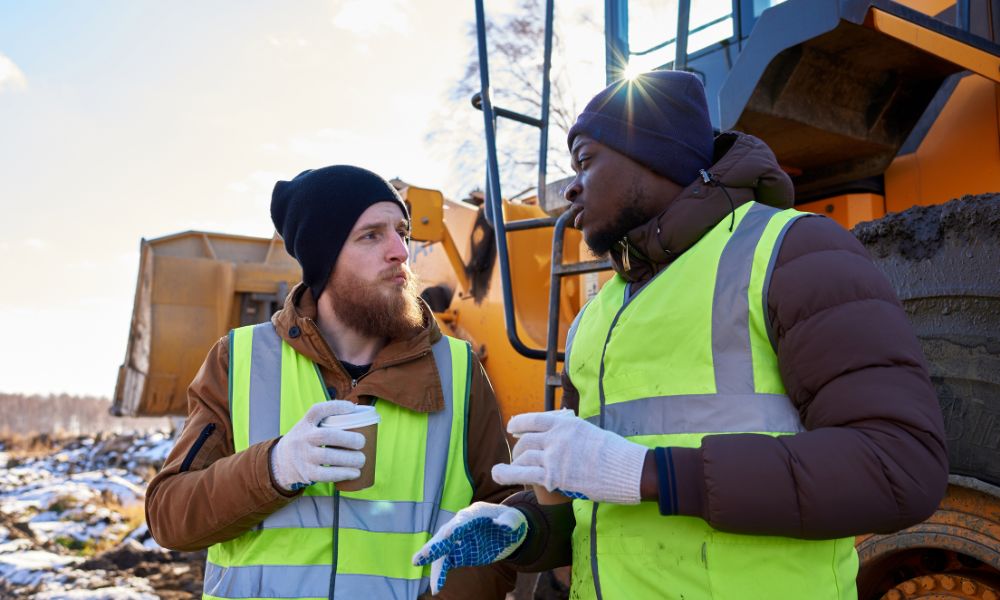
Just because winter arrives doesn’t mean that the construction industry has stopped. Outdoor work in the winter can be taxing and dangerous, so we’ve compiled a list of helpful tips for staying warm at a construction site in winter.
Know the Symptoms of Cold Stress
The first thing workers should know when working outside are the dangers of cold stress and its symptoms. Cold stress occurs when a person’s body temperature drops to the point it can’t adequately warm itself, and it can lead to hypothermia and frostbite.
Cold stress is the worst-case scenario for outdoor workers, but everyone should recognize the signs if they or someone they’re working with show symptoms like:
- Shivering
- Shallow breathing
- Drowsiness
- Slurred speech
- Loss of coordination
If a person exhibits these signs, then other workers should move them to a warm, dry place. They should also give them blankets, heating pads, and warm liquids to steadily increase their body temperature.
Wear Layers
When working outside on a construction site in winter, wearing layers is perhaps the best tip for staying warm. For one, the more layers a person wears, the more insulation they have and the better their chance of maintaining their body’s core temperature.
Wearing layers also allows workers to adjust their gear if they get too hot. Working in construction can be taxing on the body, and if a worker has lots of insulation, it can cause the person to sweat, even if the temperature is freezing outside. Sweat is the last thing an outdoor worker wants because it instantly cools the skin and can cause shivering.
Pro-Tip: Wear moisture-wicking fabrics as a base layer to keep your skin dry in the cold.
Cover the Head
It’s vital for those working outside to keep their heads warm and protected, as the ears and face can be susceptible to frostbite in a biting, cold wind. Construction workers can wear a hat underneath their hard hat, such as a knit cap or even a full ski mask, for even better facial protection.
Workers should also bring some lip balm when working outside in the cold to prevent their lips from cracking and bleeding because of the dry air.
Protect Extremities
When we’re cold, we typically feel it first in our feet and hands because our body restricts the blood flow to our extremities to keep our body’s core warmer. Our feet and hands are typically where frostbite can take hold, so outdoor workers must protect them sufficiently.
Most construction workers wear steel-toed boots, but these can trap in cold air—composite boots made of non-metal materials are better at keeping toes warm. Hand and toe warmers in gloves and boots are also excellent ways to regulate the temperatures of extremities.
